Resource wise Helsinki-Uusimaa Region
Publication of the Helsinki-Uusimaa Regional Council B 58 - 2020
ISBN 978-952-448-543-2
ISSN 2341-8893
Publisher: Helsinki-Uusimaa Regional Council
Authors: Kristiina Heiniemi-Pulkkinen, Johanna Juselius
Translation: Susan Neiro
Layout: Anni Levonen
Helsinki 5/2020
Uudenmaan liitto // Nylands förbund
Helsinki-Uusimaa Regional Council
Esterinportti 2 B
• 00240 Helsinki • Finland
+358 9 4767 411 • toimisto@uudenmaanliitto.fi • uudenmaanliitto.fi
Resource wisdom is ability to utilise economic, environmental and social resources in a way that is deliberate and creates sustainable growth.
Foreword
Covid-19 has had an impact on almost everyone everywhere. After the pandemic, national governments, municipalities, and most communities have an increased level of debt. We need to get back on track towards sustainable growth. The smart specialisation strategy is a significant instrument in supporting this.
Finland and Helsinki-Uusimaa are soughtafter as cooperation partners. For years, we have been known for our education system and competence. We are the happiest people in the world. As a result of tight international competition my hometown Espoo was nominated the smartest community in the world. And Helsinki-Uusimaa is the most innovative region in the EU.
Last year, in 2019, Helsinki-Uusimaa rose to the top of the European Union in a publication comparing the innovation environments in European countries and regions. This was the highest Helsinki-Uusimaa has been ranked in the history of the study, having placed fifth in the previous year. This is a result of determined cooperation and action. Let us continue our journey towards new sustainable growth.
EU’s Joint Research Centre supports and directs the implementation of strategies
and cooperation within and between regions, working towards the common good and growth of Europe. The administrative decisions place emphasis on developing the competence, cooperation and synergy between different levels of governance. The innovation ecosystems are engines of sustainable growth. International cooperation is a key success factor.
This smart specialisation strategy for HelsinkiUusimaa promotes the economic development of our region with the help of the latest information and new innovative solutions. Development is expedited with a handful of core themes. These themes, along with international cooperation and regional collaboration, help us create the best possible practices and procedures – and share for everyone to use.
This is, above all, a continuous process that bolsters the region’s economic foundation.
Each one of us is responsible for how well the strategy is implemented and how it is harnessed to attain growth in our municipalities and communities.
Markku Markkula President of the Helsinki-Uusimaa Regional Board Chairman of the Regional Management Committee (also unofficially called the Regional Cooperation Committee)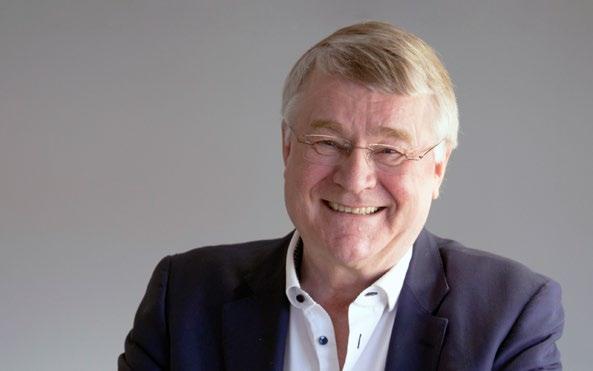
Smart specialisation is cooperation
Smart specialisation will continue to play an important role in the upcoming EU’s programming period. We trust that smart specialisation will help us become even better and more attractive than before, which is one of the central regional development goals for Helsinki-Uusimaa. Integrated strategies involving smart specialisation allow us to tackle even the most complicated developmental challenges by modifying our operations for the good of the Helsinki-Uusimaa region.
The starting point for the smart specialisation strategy is to encourage all stakeholders to work toward a shared vision. Our strategy promotes multi-level governance and helps generate creative and social capital in the community by bringing together actors of all sizes.
The preparation process for our new smart specialisation strategy has been interactive, regionally oriented and based on an extensive mutual understanding. However, HelsinkiUusimaa needs also to be very outwardoriented to be a part of European and global value chains and improve its cooperation with other regions, clusters, and innovators. This is increasingly important if we want to
internationalise regional actors, maximise our operational potential and create information flows linked to regional information and knowledge.
It pays to focus on fields that have true potential and strength, instead of scattering resources and investments across many sectors. Our clearly defined core themes will help focus our strategy, improve its clarity and understandability, and direct its influence over regional development.
The 2020 coronavirus pandemic has resulted in great personal tragedies, but it has also significantly impacted the way our societies operate, as well as their services, working conditions and the global economy. It is clear that we will not be continuing in the same operating environment that we envisioned until recently; the pandemic has already changed the way we think and act. This crisis, despite all of its negative consequences, is going to create new operating methods and innovations that will shape our regional development.
Ossi Savolainen Regional Mayor, Helsinki-Uusimaa Regional Council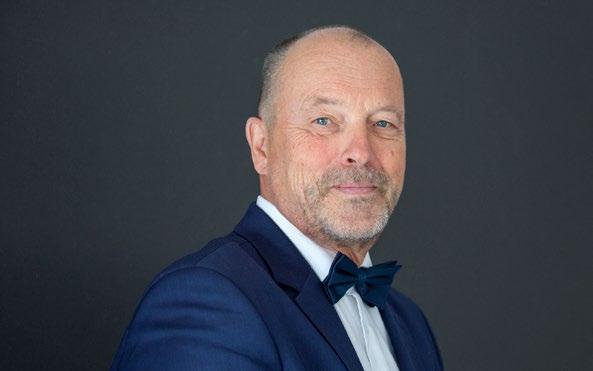
Sustainable economic growth through resource wisdom
The goal of regional innovation and research strategies is to promote competitiveness and sustainable economy in Europe. The goal of the Helsinki-Uusimaa strategy is to use resources wisely in order to create sustainable growth that is based on innovation. Helsinki-Uusimaa’s greatest strengths and innovation potential are crystallised in measures that support the region’s carbon neutrality goals, urban development, industrial modernisation, and well-being in everyday life.
Helsinki-Uusimaa’s goals include sustainable economic growth, carbon neutral HelsinkiUusimaa by 2035, industrial modernisation and well-being in everyday life. The goal is to improve processes and increase the effectiveness of measures. The cross-cutting theme of the strategy is development of competence.
The purpose of the strategy is to create a change in operating logic, which is necessary in our changing operational environment and makes challenge-based innovation possible.
The strategy itself is a flexible, evolving process that bridges the gaps between operational sectors. It responds to challenges arising from the operational environment and promotes sustainable regional growth. Helsinki-Uusimaa has the potential to become an international forerunner in resource wisdom, maintain its position as Europe’s leading innovation region and support the European Union’s role as a pioneer of sustainable development and growth that is based on regional strengths and drivers of change.
Helsinki-Uusimaa’s goals include sustainable economic growth, carbon neutral Helsinki-Uusimaa by 2035, industrial modernisation and wellbeing in everyday life.
Part of the global community
The strategy is influenced by global changerelated phenomena (known as megatrends), sustainable development, programmes such as the Finnish Government Programme and EU Strategy, the regional development decision by the national government and changes in the operational environment. Megatrends pose a challenge, but if tackled properly, they also offer significant opportunities and a competitive edge to Helsinki-Uusimaa’s research and innovation operations.
Megatrends
Megatrends also impact the HelsinkiUusimaa Region. The most relevant to us are demographic change, climate change and globalisation. We have the competence to develop solutions to these challenges.
Demographic change: Demographic change can be clearly seen in the HelsinkiUusimaa region. As birth rate drops, the average age of the population increases, although at a slower rate than in other parts of Finland. As a result of migration, the population in the metropolitan area will continue to grow. In many other municipalities in the region,
population growth has stalled or even turned into a decline. A large portion of immigration is concentrated in the Helsinki-Uusimaa Region, also influencing the demographic change. All of these will impact the local economy in various ways.
Climate change: Finland is committed to the 2015 Paris Agreement on climate change, and Helsinki-Uusimaa’s goal is to be carbon neutral by 2035. The transition to a low-carbon society requires significant changes in the
infrastructure for mobility and in the built environment. We also need to make changes and preparations in order to adapt to the effects of climate change.
Globalisation: Globalisation is taking major strides, resulting in the integration of markets and globalization of value chains. We need to turn our attention to the global economy and, for example, promote the internationalisation of companies. We need to support the Finnish capital region’s ability to compete in attractiveness with other cities in the world. At the same time, we must ensure that the rest of the Helsinki-Uusimaa region is able to network and evolve as an actor in the sustainable global economy.
Digitalisation: Digitalisation was already a cross-cutting theme in our previous strategy. Digitalisation changes the way companies and organisations operate, for example by transferring information and procedures to digital devices. At the same time, it creates new business opportunities, products and services. As digitalisation changes existing businesses, it also influences workplaces and the value networks of companies.
The global phenomena most relevant to Helsinki-Uusimaa are demographic change, climate change and globalisation.
UN Sustainable Development Goals
In 2015, Finland committed to the sustainable development goals of the United Nations. Their purpose is to ensure development that is sustainable for the environment, people and economy. The sustainable development goals significant to the Helsinki-Uusimaa region include
Goal 1. Eliminating poverty in all its forms requires that we reduce inequality and protect the most vulnerable among us by increasing the use of resources and services.
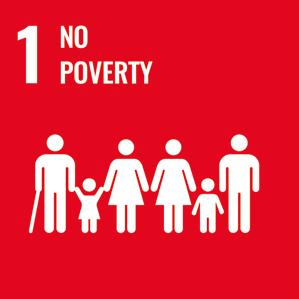
Goal 4. A high-quality education system that is equal and open for everyone, as well as lifelong learning opportunities
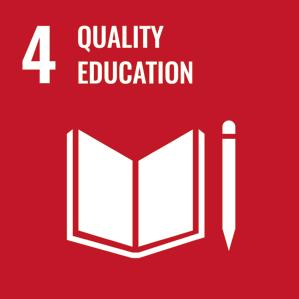
Goal 9. Building a sustainable infrastructure and promoting sustainable industry and innovation.
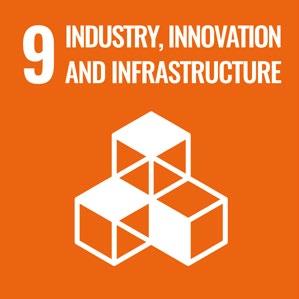
Goal 11. Ensuring safe and sustainable cities and living communities
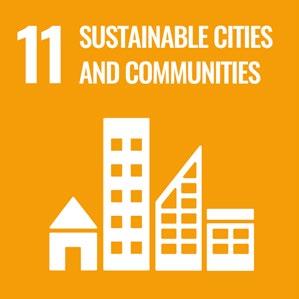
Goal 13. Urgent climate action to combat climate change and its effects.
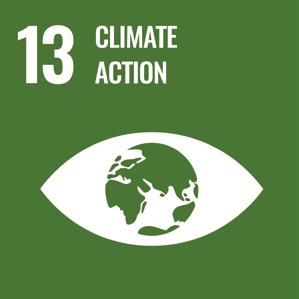
Goal 16. Peace, justice and good administration require responsible and sustainable institutions at all levels.
Sustainable development
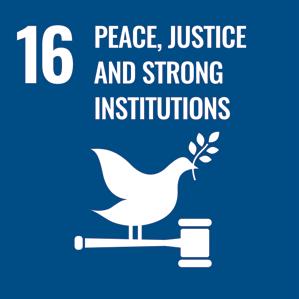
European strategies and programmes
The European Union is striving towards sustainable growth and has taken on the role of a pioneer in innovation policy based on demographic change, climate change, digitalisation, globalisation and sustainable development. The goal of European strategic value chains is to improve competitiveness and expedite change in these areas as part of the European Green Deal. The Green Deal strives for a climate neutral European Union by 2050. Reaching this goal requires actions from all sectors.
Helsinki-Uusimaa Region
Helsinki-Uusimaa is the spearhead of economic growth in Finland. Climate change, demographic change, urbanisation, digitalisation and global economic phenomena are also concentrated in this region. Likewise, the solutions to these challenges are created here. Helsinki-Uusimaa’s sectoral profile includes a significantly larger portion of competence-intensive services than other regions. At the same time, technological competence alone will not be enough in the future. We need more understanding of ecosystems, value creation processes and changes in the interests and operating methods of people/consumers.
Climate neutral EU by 2050
The solutions to challenges are born in HelsinkiUusimaa
Strategic goals
The goals of the strategy are:
Sustainable economic growth, innovation based sustainable growth by a wise use of resources.
A carbon neutral HelsinkiUusimaa by 2035, carbon neutrality by 2035, a goal set in the Helsinki-Uusimaa Regional Programme 2.0.
Industrial modernisation, utilising the opportunities created by new technologies to improve the competitiveness, growth potential and internationalisation of businesses.
With the strategy and its implementation, we will also develop the processes and methods of co-creation and co-operation.
Well-being in everyday life, constant improving of the services with the focus on people.
Resource wisdom in Helsinki-Uusimaa
The strategy responds to demands for change and future growth by focusing on the efficient and wise use of social, economic and environmental resources. The importance of the wise use of resources for the future of the Helsinki-Uusimaa Region was emphasized in the preparatory process of the strategy.
• Helsinki-Uusimaa’s strengths respond to current trends under the umbrella theme resource wise Helsinki-Uusimaa. The solutions require a cross-sectoral approach and defining the wise use of resources delineates the projects.
• A resource wise Helsinki-Uusimaa improves its ability to utilise existing resources and create growth through new resources (e.g. natural resources, raw materials, energy, products and services, workforce, information, competences, institutions and organisations) in a way that is considered and economically, socially and environmentally sustainable.
• Sustainable growth, that takes environmental, social, and economic factors into account, creates new opportunities for local actors.
• The development of digital applications and technology accelerates reaching the sustainable development goals.
• Resource wisdom gives a competitive advantage for HelsinkiUusimaa internationally.
Resource wisdom means utilising various resources in deliberate and proactive ways that promote well-being and sustainable development. A resource is a financial, social, physical, or human asset that helps to initiate and develop action.
Strategic priorities
The overarching theme of resource wisdom covers three strategic priorities:
• Climate neutrality
• Citizens’ city
• Industrial modernisation
Climate neutrality includes actions that support Helsinki-Uusimaa’s carbon neutrality goal. Areas covered by the theme include, for example, circular economy solutions, new sources of energy, bioeconomy innovations and new materials.
Citizens’ city includes actions that support urban development, well-functioning everyday life, and the wellbeing of citizens. Areas covered by the theme include, for example, mobility solutions, housing, urban planning, and healthcare.
Industrial modernisation includes actions that support transformation in various sectors. Areas covered by the theme include, for example, new industrial processes, health technologies, robotics, and tourism.
The interfaces and cross-sections between the strategic priorities combine multiple themes. By opening up opportunities at these interfaces, we are responding to the changes in different sectors and bridging the gaps between them. Examples of areas that combine these themes include construction, mobility, food industry and data management.
Helsinki-Uusimaa is broadly active regarding innovations in various fields of strategic value chains in EU. These include, for example, autonomous vehicles, smart health, lowcarbon industry, hydrogen technology, the industrial internet of things and cyber security.
Competence is a uniting factor across all strategic priorities. Helsinki-Uusimaa has a strong and versatile educational sector. Responding to the needs of resource wisdom requires the extensive and efficient utilisation of competences in all priority areas. The supply and demand for competence must be actively anticipated and various educational opportunities must be supported. Harnessing the competence of highly educated immigrants poses a special opportunity and challenge in the Helsinki-Uusimaa region.
Cooperation and innovation platforms
The implementation of the strategy involves
• financing projects and development facilities implementing the strategy
• supporting regional innovation ecosystems and networks
• promoting cooperation across regional borders to build stronger entities for wider impact
• participating and encouraging actors to participate in international networks and platforms
• strengthening the Helsinki Smart Region brand and improving its visibility abroad.
Prominent cooperation partners in implementing the strategy include institutions of higher education, research facilities, cities and municipalities, regional development companies and businesses.
We cooperate with the EU institutions, Finnish ministries, and other regions.
Regional cooperation
Improving the region’s competitiveness requires flexible cooperation between all actors
in the region. Institutions of higher education, cities, development companies, research facilities and businesses play a prominent role in implementing smart specialisation. Cooperation between these parties and new forms of cooperation are promoted by allocating funds to collaborative projects. Emphasis is also placed on creating open networks and forging new partnerships.
Innovation platforms and pilot facilities
Innovation based on versatile, continuously updated and internationally competitive competence is born in a long-term innovation ecosystem that is sufficiently cross-sectoral and based on experimentation.
Research-based innovation environments have formed around the region’s research facilities and institutions of higher education. They also include various pilot facilities that make it possible to develop innovations further towards commercial readiness. The participation of businesses and cities is crucial to the functionality of these ecosystems. HelsinkiUusimaa’s municipalities and city districts also act as testbeds and development platforms for
Prominent partners include institutions of higher education, research facilities, cities and municipalities, regional development companies and businesses.
new solutions. The citizens and other users (like visitors) play an important role in this.
Different platforms and pilot environments are supported in the implementation of the strategy.
Projects implement the strategy
The smart specialisation strategy is mainly financed by national funding via the HelsinkiUusimaa Regional Council, as well as structural funds (ERDF and ESF). In this funding we emphasize the smart use of resources from both economic, environmental, and social perspectives. The financed projects are divided thematically into projects that support a climate neutral society and circular economy, projects that support the citizens’ city theme and projects that support industrial modernisation.
Using and developing competences is an important part of the smart specialisation strategy. Diverse competences and strong educational institutions are specific strengths of Helsinki-Uusimaa. We also want to support these competences and making use of them as part of the strategy’s implementation.
International networks and platforms
Actors from Helsinki-Uusimaa are partners in several networks that cooperate around the themes of smart specialisation.
The European Commission provides several cooperation initiatives and platforms. These include, for example, the S3 Platform and its thematic platforms. Helsinki-Uusimaa is a partner in the Safe and Sustainable Mobility platform (SSM), among others.
Almost all Knowledge and Innovation Communities (KIC) of the European Institute of Innovation and Technology (EIT) include actors from Helsinki-Uusimaa.
Helsinki-Uusimaa has selected the Amsterdam Metropolitan Area, the Hamburg City State, the Capital Region of Denmark (Copenhagen) and the Stockholm region as its cooperation partners. Together, they form the Big Five network. This cooperation started with the themes of smart specialisation and is being deepened through joint development projects. Other networks that the Helsinki-Uusimaa Regional Council belongs to include the European Regions’ Research & Innovation Network (ERRIN), Baltic Sea States Subregional Co-operation (BSSSC) and the European Conference of Peripheral Maritime Regions (CMPR).
The Helsinki-Uusimaa Regional Council promotes its stakeholders’ participation in international networks and cooperation projects through its own actions and by providing support for project preparation. By combining the strengths of different regions and transferring competences across national borders, we will be able to more
efficiently harness the resources of Europe in its entirety.
National cooperation
Cooperation across regional borders is naturally focused on our neighboring regions and the regions covered by Southern and Western Finland’s structural funds. The cooperation is primarily carried out through cross-regional projects financed by structural funds. Another focus of national cooperation is the collaborative development work between Finland’s six largest cities, which was initiated through the Six City strategy (6Aika).
Cross-regional thematic cooperation and peer learning are promoted by a national smart specialisation colleague network. It meets to discuss current themes several times a year. The network can also introduce issues relevant to all regions into national discussion.
Communication and advocacy
The Helsinki-Uusimaa smart specialisation strategy and its implementation are showcased through the Helsinki Smart Region communication channels. They highlight regional expertise and concrete examples of smart innovation and piloting activities. This is done in cooperation with our regional stakeholders.
Resources for the implementation
The smart specialisation strategy utilises a wide variety of financial instruments in its implementation. Structural funds play a central role. In particular, the strategy influences the selection of projects supported by the ERDF (European Regional Development Fund) and the ESF (European Social Fund). It also affects other regional funding to some extent.
In implementing the strategy, the HelsinkiUusimaa Regional Council uses national funding for the sustainable growth and vitality of the region. The funding is allocated to projects that follow both the regional programme and smart specialisation strategy.
The goal is to create synergy between financial instruments and bring together projects that build on and complement each other using several different financial instruments.
Examples of these other instruments at national level include funding granted by Business Finland (the government organisation for innovation funding and trade, travel and investment promotion) and the Academy of Finland (an agency within the administrative branch of the Finnish Ministry of Education, Science and Culture).
In international cooperation and in research and innovation projects, regional actors utilise widely Interreg funding as well as Horizon Europe funding, which is allocated specifically for research. We also aim to raise awareness of other European financial instruments and how they can be utilised more efficiently.
One of the goals of public funding is to also enhance the use of private funding.
The goal is to create synergy between financial instruments.
Action at multiple levels
Smart specialisation strategy is successful when closely connected actors innovate together based on their region’s strengths. Smart specialisation is a place-based strategy. That is why the regional innovation ecosystem and its actors play a central role.
The implementation of smart specialisation strategy requires participation and processbased co-creation at different levels of government. Smart specialisation is an experimental innovation strategy, and due to its nature, monitoring and learning play an important role in developing the practice. Multilevel governance at the EU, and at national and regional levels is based on its flexibility and process-like format.
The European Union decides on policy development, shared goals and the available funding to promote the implementation of smart specialisation. At the national level, innovation policy and its funding are coordinated by the Ministry of Economic Affairs and Employment of Finland.
Smart specialisation strategies are used to ensure synergy between the European Union’s policies and funding. They supplement national and regional programmes and private investments. At the regional level, smart specialisation is a tool for directing research and innovation.
The interactive implementation is carried out at the regional level by the Regional Council, which has the strongest cooperation practices with prominent regional actors, such as educational institutions, development companies, municipalities, and cities. The smart specialisation strategy is implemented through multi-level governance. In the HelsinkiUusimaa region, the strategy is implemented and coordinated by the Helsinki-Uusimaa Regional Council, also being responsible for the monitoring and assessment.
The interactive definition of goals and implementation in extensive cooperation of wide variety of stakeholders is called the entrepreneurial discovery process (EDP).
Joint innovations based on strengths.
Cooperation between regional actors
The smart specialisation strategy is approved by the Helsinki-Uusimaa Regional Board.
The implementation and direction of the strategy is overseen by the Regional Management Committee MYR (which is unofficially called the Regional Cooperation Committee). It is a statutory authority that manages regional resources and defines the state administration’s regional development projects and policies. MYR meets about six times a year. The group includes representatives of Helsinki-Uusimaa Regional Council’s member municipalities, state administration, institutions of higher education, labor market organisations, and industry associations, among others. MYR regularly monitors and evaluates the implementation of the smart specialisation strategy in their meetings. It guides the implementation and proposes changes to it and the strategy itself if necessary.
The Secretariat of the Regional Management Committee (MYRS) oversees and reconciles regional projects and prepares agenda items for the MYR.
The practical implementation of the smart specialisation strategy is coordinated by the Helsinki-Uusimaa Regional Council’s smart specialisation team. The team compiles a summary based on data collected through
RIS3 TEAM REGIONAL COUNCIL
monitoring and reports on the strategy’s implementation to the MYR and the Management of the Helsinki-Uusimaa Regional Council.
Different teams of the Helsinki-Uusimaa Regional Council and the Helsinki EU Office also participate in the implementation of the strategy. In order to maintain a shared vision and up-to-date picture of the situation, the strategy and its implementation is discussed in a coaching team as well as expert groups in the Helsinki-Uusimaa region.
The coaching team is a new cooperative team created as part of the implementation of this strategy. It comprises of research, development and innovation experts who represent companies, research facilities and educational
institutions. The coaching team helps to steer the smart specialisation in our region.
The Regional Council coordinates expert groups of different fields. The members of the groups are primarily representatives of the municipalities. They discuss the Council’s preparatory work in advance and integrate it with the work performed in the municipalities in order to improve its efficiency. The groups share information about important current affairs and oversee the region’s interest, issuing statements or initiatives when necessary. The smart specialisation strategy is a new topic discussed within the expert groups. The strategy is mainly overseen by the group of municipal development managers and other groups depending on the themes.
Monitoring
Monitoring gives us information on the effects the strategy and its implementation have in the Helsinki-Uusimaa region. Monitoring and indicators generate data that can be used to analyse the strategy. The indicators are used to assess the strategy from three different perspectives:
• monitoring the efficiency of the strategy and the development of the industrial structures and innovation capabilities
• monitoring the results of the measures taken
• monitoring the implementation of the strategy and the funding available and spent.
Based on the monitoring and its results, we can adjust the strategy and its implementation, as necessary.
The indicators need to be appropriate and informative, which is why the monitoring practices and indicators will continue to be developed as the strategy is implemented. Some indicators may prove to be too general, and we have yet to set an indicator for digitalisation. We are prepared to update our indicators to better suit our needs if necessary.
Indicators for measuring regional impact
Helsinki-Uusimaa’s development as a region is monitored through changes to the results of various European analyses. These analyses include the Regional Innovation Scoreboard (RIS), European Regional Competitiveness Index (RCI) and European Social Progress Index (SPI). Changes to these indicators and the direction of these changes reflect the efficiency of regional strategies. In addition to following the development of our own region, we can also monitor where Helsinki-Uusimaa stands within Europe as a whole.
Certain parameters will be selected out of these indexes and monitored more frequently.
Indicators for monitoring the smart use of resources (thematic indicators)
The cross-cutting goal of Helsinki-Uusimaa’s smart specialisation strategy is the wise use of existing resources.
The monitoring and indicators are being constantly developed.
From an environmental standpoint this means, for example, reducing the strain on the environment. The evolution of greenhouse gas emissions is used as an indicator at the regional level.
From a business standpoint, the wise use of resources means using the correct number of competent employees. This is monitored by following employment trends (employed people by sector) and the level of education (educational structure of the population and number of study places in educational institutions). Additionally, we will be paying particular attention to the number of growth companies by sector.
Digitalisation allows more efficient use of resources by renewing operating practices, improving the quality and availability of services and improving the efficiency of operations. We are looking for a suitable indicator for monitoring the effects of digitalisation.
Indicators for monitoring funding and its use
The use of the funding granted for the implementation of the strategy is monitored by each theme. The results show in which themes the actors have been able to generate successful development activities (projects that have received funding) and which themes could use more attention (how the funding
applications are distributed among the themes). Once we know the amount of funding available and how it is allocated, we can better assess the results and re-direct funding calls, as necessary.
The amount and allocation of the funding granted by structural funds and the Regional Council is monitored more closely. The results of the funded projects are monitored using the result indicators of the financial instruments. The data is collected from the financing parties.
The allocation of other financial instruments fostering the smart specialisation strategy is monitored at a more general level. This data helps us form a clearer picture of the strategy’s implementation on a larger scale. Based on the result, the allocation of the funding can be influenced through various indirect measures, such as supporting the preparation of project applications. The data is collected from the statistics of the financing parties.
Helsinki-Uusimaa as an attractive cooperation partner (brand awareness)
The international communication around smart specialisation is compiled under the Helsinki Smart Region brand. Through it, the HelsinkiUusimaa Regional Council and local actors will be able to find potential partners for peer learning and development projects. Awareness of the brand is measured through the number
of visitors to the website and other, qualitative indicators based on communications and influence.
Separate questionnaires and feedback
The goal of the strategy is to increase cooperation between actors across different sectors. Another long-term goal is creating synergy between projects and initiating developments on a larger scale. The fulfillment of these goals is assessed through various questionnaires. The questionnaires are also used to compile the actors’ experiences with the strategy and its implementation, and to collect suggestions for changes and improvements.
The Helsinki Smart Region brand promotes smart specialisation in the Helsinki-Uusimaa Region.
Assessment
The implementation of the strategy is assessed based on the indicators used. The Regional Management Committee (MYR) receives an overview of the strategy’s implementation in their meetings. The results of all indicators are compiled on an annual basis. The implementation of the strategy is assessed based on the results and it or the strategy itself is adjusted as necessary.
The Secretariat of the Regional Management Committee (MYRS) regularly monitors the funding for projects implementing the smart specialisation strategy and how the funding is distributed between different priorities.
Based on their assessment, MYRS may propose changes to the implementation of the strategy.
A more comprehensive assessment of the strategy and its impact is conducted every other year. It compiles results from the indicators used as well as the assessments of Helsinki-Uusimaa expert groups. The data is supplemented with interviews.
The cooperation with other Finnish regions in smart specialisation makes peer reviews on a national scale possible. Additionally, we will participate in the appropriate S3 Platform peer reviews.
Results are compiled on an annual basis.
Changes and updates to the strategy
Based on the results of the assessment, the Regional Management Committee (MYR) will propose necessary changes to the strategy or preparing a new smart specialisation strategy, if necessary. Smaller corrective actions can be made by adjusting the implementation of the strategy. The smart specialisation strategy for Helsinki-Uusimaa is approved by the HelsinkiUusimaa Regional Board.
The implementation of the strategy can be adjusted when necessary.

